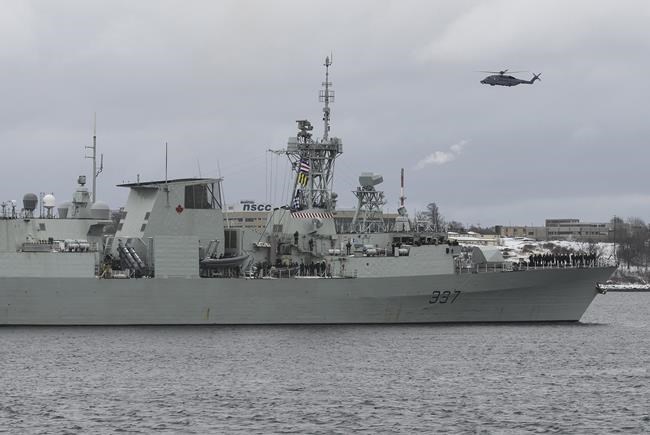OTTAWA — The Canadian military was scrambling for answers Wednesday after losing contact with one of its new Cyclone helicopters, with reports that at least one person was killed when it crashed into the Mediterranean Sea.
The Cyclone was deployed on board the Halifax-class frigate HMCS Fredericton and was participating in a NATO exercise off the coast of Greece when the incident occurred, according to the Canadian Armed Forces.
"Search and rescue efforts are currently underway," the military said in a statement. "As this is evolving, we have no further information to provide at this time."
The Royal Canadian Air Force's Cyclone helicopters carry a crew of four, including two pilots, a tactical operator and a sensor operator with space for several passengers. They are primarily based on naval vessels and used for hunting submarines, surveillance and search and rescue.
Greek state broadcaster ERT was first to report that a Canadian military helicopter had gone down in the water between Italy and Greece. The broadcaster later said one body had been found and five others on board were missing.
In a tweet late Wednesday, the Canadian Armed Forces said it has contacted all primary family members of those who were on board the helicopter.
HMCS Fredericton left its home port of Halifax with the Cyclone for a six-month deployment to Europe in January. While the navy has since recalled several of its warships due to COVID-19, the Fredericton has continued its mission.
The vessel made a port call in Italy in March and was scheduled to visit Greece as well as the Black Sea. It is currently one of eight warships attached to NATO's Standing Maritime Group 2, which are responsible for providing a visible military presence in the Mediterranean.
The crash of a Cyclone helicopter would represent a terrible blow for the military, which only started using them on real missions in late 2018 after more than a decade of developmental challenges, delays and cost overruns.
It is also likely to raise questions about the aircraft.
The military was originally supposed to have received 28 Cyclones from manufacturer Sikorsky starting in November 2008. But the first helicopter wasn't delivered until June 2015 and even then, they were missing vital equipment and software and only suitable for training.
In 2012, Peter MacKay, who was then defence minister, described the Cyclone deal as "the worst procurement in the history of Canada." MacKay is now a candidate in the Conservative leadership race.
More recently, defence officials have praised the aircraft — of which only 18 have been delivered so far — as it has replaced the military's ancient Sea Kings and started real operations. That is despite one having been damaged last year when it had a "hard landing" in the Pacific Ocean.
"Getting this helicopter fielded was a long and winding journey and it's been a great thing to actually get those helicopters on the ships," said defence analyst David Perry of the Canadian Global Affairs Institute.
"If one did crash, they would obviously need to do an investigation to figure out why because there's any number of different things that could potentially have happened, some of which may have had to do with why the helicopter took a long time to be introduced."
This report by The Canadian Press was first published April 29, 2020.
—With files from The Associated Press
Lee Berthiaume, The Canadian Press



